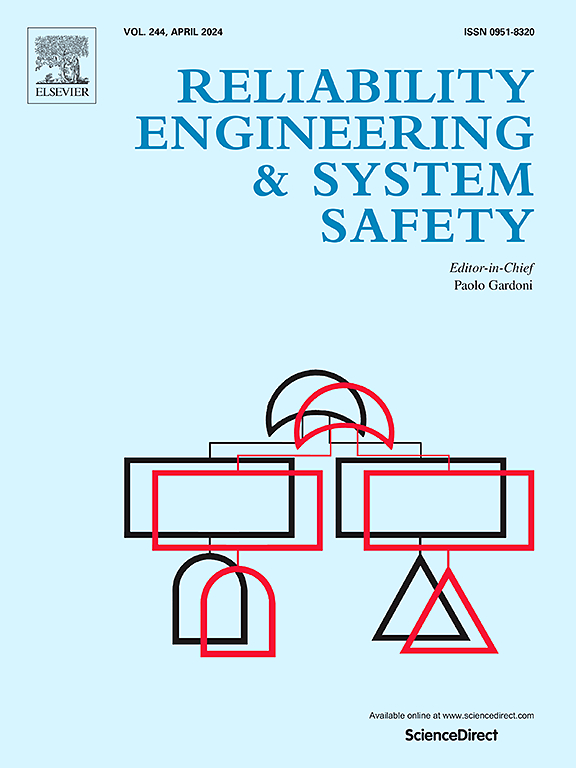DCML-CSAR: A deep cascaded framework with dual-coupled memory learning and orthogonal feature extraction via recursive parameter transfer for SOH-RUL assessment
IF 9.4
1区 工程技术
Q1 ENGINEERING, INDUSTRIAL
引用次数: 0
Abstract
Accurate state of health (SOH) and remaining useful life (RUL) predictions are essential for battery health assessment, early fault detection, and ensuring system safety. However, existing methods struggle to effectively capture multiscale spatiotemporal characteristics, recognize intricate degradation patterns, and achieve synergy between SOH and RUL tasks due to independent architectures and limited information inheritance. To address these challenges, we propose a novel cascaded SOH-RUL assessment framework that integrates recursive hyperparameter transfer to enable deep coupling between SOH and RUL predictions. The framework employs a Triple-Orthogonal-Plane CNN to map battery data onto three orthogonal hyperplanes, extracting and fusing temporal-spatial features via an attention-based adaptive weighting mechanism. Additionally, a Dual-Coupled Memory-Learning LSTM with a novel gating interaction mechanism enhances temporal feature modeling by coupling forget and input gates and introducing peephole connections. Extensive experiments on multiple datasets, including NASA, Oxford, and CALCE, under diverse degradation scenarios, demonstrate significant improvements in prediction accuracy, robustness, and generalization. This framework offers a promising solution for advancing battery health management and system reliability.
DCML-CSAR:基于递归参数传递的双耦合记忆学习和正交特征提取的深度级联框架
准确的健康状态(SOH)和剩余使用寿命(RUL)预测对于电池健康评估、早期故障检测和确保系统安全至关重要。然而,现有方法由于结构独立,信息继承有限,难以有效捕获多尺度时空特征,识别复杂的退化模式,实现SOH和RUL任务之间的协同。为了解决这些挑战,我们提出了一种新的级联SOH-RUL评估框架,该框架集成了递归超参数传递,以实现SOH和RUL预测之间的深度耦合。该框架采用三正交平面CNN将电池数据映射到三个正交超平面上,通过基于注意力的自适应加权机制提取和融合时空特征。此外,具有新型门控交互机制的双耦合记忆学习LSTM通过耦合遗忘门和输入门以及引入窥视孔连接来增强时间特征建模。在多个数据集(包括NASA、Oxford和CALCE)上进行的大量实验表明,在不同退化情景下,预测精度、鲁棒性和泛化方面都有显著提高。该框架为提高电池健康管理和系统可靠性提供了一个有前途的解决方案。
本文章由计算机程序翻译,如有差异,请以英文原文为准。
求助全文
约1分钟内获得全文
求助全文
来源期刊

Reliability Engineering & System Safety
管理科学-工程:工业
CiteScore
15.20
自引率
39.50%
发文量
621
审稿时长
67 days
期刊介绍:
Elsevier publishes Reliability Engineering & System Safety in association with the European Safety and Reliability Association and the Safety Engineering and Risk Analysis Division. The international journal is devoted to developing and applying methods to enhance the safety and reliability of complex technological systems, like nuclear power plants, chemical plants, hazardous waste facilities, space systems, offshore and maritime systems, transportation systems, constructed infrastructure, and manufacturing plants. The journal normally publishes only articles that involve the analysis of substantive problems related to the reliability of complex systems or present techniques and/or theoretical results that have a discernable relationship to the solution of such problems. An important aim is to balance academic material and practical applications.
 求助内容:
求助内容: 应助结果提醒方式:
应助结果提醒方式:


